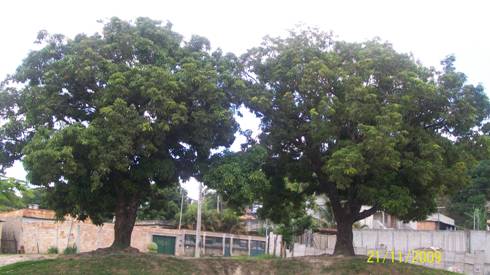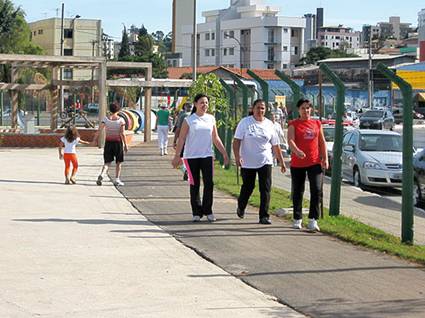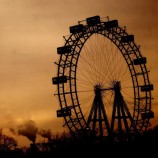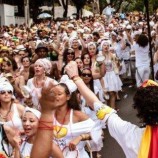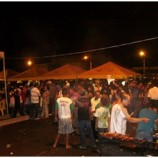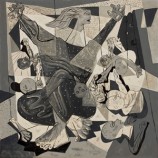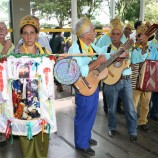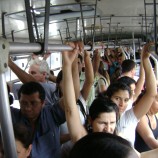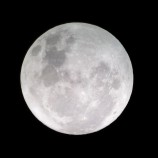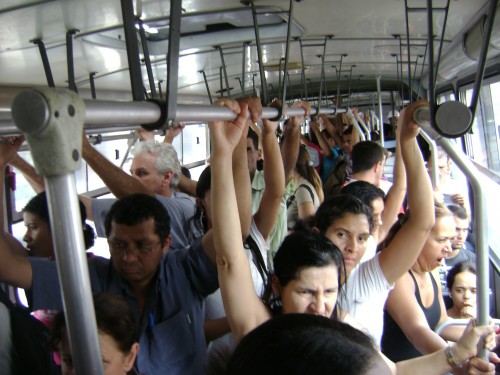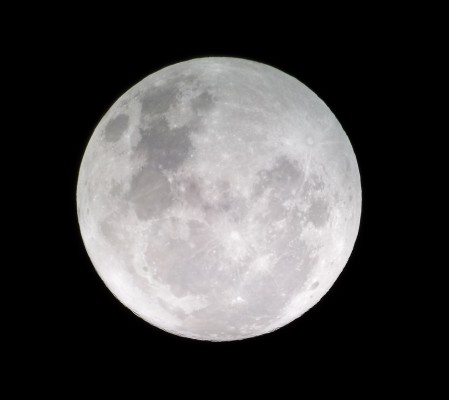In the course of the day, when I depart Belo Horizonte, headed for the nearby city of Betim, between the districts Coração Eucarístico and Barreiro, my thoughts and reflections accompany me on my travels. Sometimes I become very disconnected from the external occurrences and landscapes and remain immersed in my internal flights. On other days I’m more aware of the city’s scenes and everyday goings about.
Today I remembered a saying that I recently heard somewhere: When a fact or a situation keeps knocking on your door, answer and inquire: what does it signify? I decided to comply.
Today I left an event in BH and needed to arrive quickly in Betim for my next activity. Along this trajectory which I take many times throughout the week, today my attention was drawn to a familiar sight. To better situate you, about ten years ago an important construction project was built in Betim for the integration of the city and which facilitated alternative access routes for various neighboring districts such as Contagem and Belo Horizonte. Formerly the only roadway was by highway Fernão Dias, BR 381. Known as Riacho das Areias, this project let to the completion of Avenida Marco Túlio Isaac and is adjacent to the Via Expressa.
The largest stretch was built when Betim had a female engineer as Secretary of Development who, besides her technical skills, had a great social-environmental sensibility and for esthetics. And it is amazing the difference that minor details make. For the realization of the construction which provided channeling for the creek, two car lanes including a bike path, it would require in a certain portion of the roadway to be cut down two lustrous mango trees standing side by side. But the Secretary of Development decided to go back and change the project’s design in a way for the trees to be preserved. Anyone going through the heights of Jardim das Alterosas can observe these two trees still standing.
Then today, where was I? -when I came through around noontime, stifling under the heat, I saw a group of adolescent students gathered together sitting under the mango trees. I retained this image and it sparked many ideas, thoughts and feelings in me. There are so few green areas left in our cities! It’s all so gray, arid. In these times of global warming, of the tremendous numbers of vehicles occupying most of the space – try and compare the space pedestrians have against the space cars take up – excessive emissions of polluting, noxious fumes. There is so much noise, so much visual information muddying our sight.
This shade and greenery that have been preserved is an oasis in this desert of asphalt in which we live.
Why do so few public administrators have this sensibility? I recall the time when the construction of the Linha Verde and its tunnels were underway, my sister who resides over 30 years now in Cidade Nova telling me of her great pain and revolt about each tree that was cut down: “Trees that I saw being planted, flowered, destroyed mercilessly”. No one thought of the future consequences. The protest movements spurred by some residents were useless.
I continued my daily activities, but the sight of the students under the mango trees kept reoccurring in my mind.
I return to Belo Horizonte and still on double time I ran through the buildings and spaces inside of the Universidade Católica – PUC, in the district of Coração Eucarístico. I admire not only the solidity and architectural beauty of the buildings there as much as the green lawns, their pampered gardens, carefully watered now in the rainy season. Then suddenly I run into a group of student meeting under some trees, in a well-ventilated place protected from the excessive heat. One of them read aloud to the others who were sitting in the shade listening attentively. I paused there a moment with one heck of a desire to stay there with them and just enjoy the landscape, the gardens and the trees’ shady generosity.
And off I go on my crazy schedule! Now I have to get home before going on to my night classes at PUC-Barreiro. On the way home the heat is unbearable and the traffic tense. Few trees are to be found and almost no greenery. Only a few small trees stubbornly survive in the middle of so much pollution! And a knock on my door again: what kind of cities are we building? On the Via Expressa, at a traffic junction, an area is fenced in for the construction of a jogging track, they even built in bars for stretching. At the time I saw them building this I was startled: “This is nuts! Do they really think that someone is going to go for a walk here, in this intersection of roads jam packed with cars, honking and pollution? The space is small, there is no forestation or gardens. Then on the next time I pass by I see it’s full of people. This absurdity is an indicator of the precariousness of the city’s lack of places where people can meet, go for walks. It’s missing squares and gardens, public places for physical activities.
So, this was the subject that kept knocking on my door today. Is it possible? At the intervals of my activities, going from one place to the next, my thoughts were of a happy dream of a town.
Related Articles


